NORTH WALES COAST RAILWAY:NOTICE BOARD
Rheilffordd arfordir gogledd Cymru: Hysbysfwrdd
08 March 2021





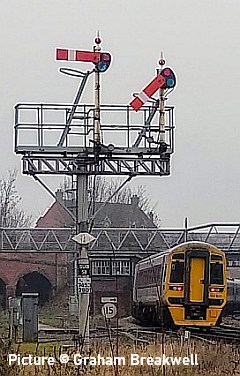
Forthcoming events
(see also our Calendar page for venues)
Note: we have removed all entries relating to meetings as the events are cancelled.
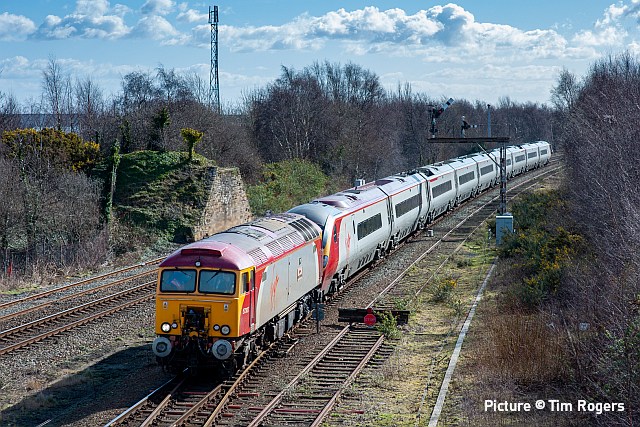
Sunny 4 March 2008, and 57 307 Lady Penelope drags her Pendolino 390 011 City of Lichfield past Holywell Junction with the 09:00 London to Holyhead. Picture by Tim Rogers.
Website News
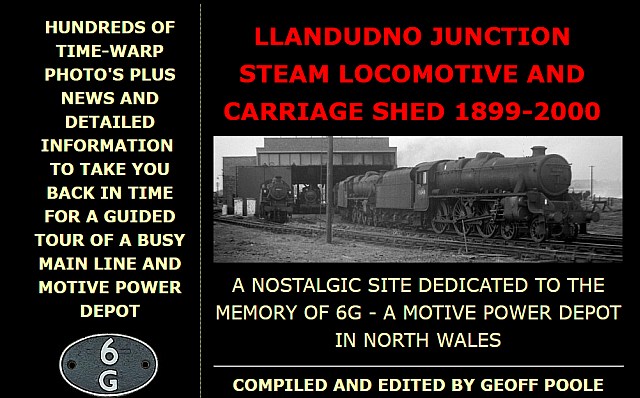
The website Llandudno Junction 6G Shed' by Geoff Poole has re-located from 6g.nwrail.org.uk to another server, and can now be found at 6gshed.co.uk; we are working with Geoff to take the opportunity re-design the pages in a more modern readable format. There are around 150 pages altogether, full of images and information of all sorts (biographies of staff, trainspotting records, anecdotes and more), not restricted to Llandudno Junction or even North Wales. 100 pages are now converted - we invite you to take a look.
News images

67 015 passing Conwy Castle on a training run, 2 March ...
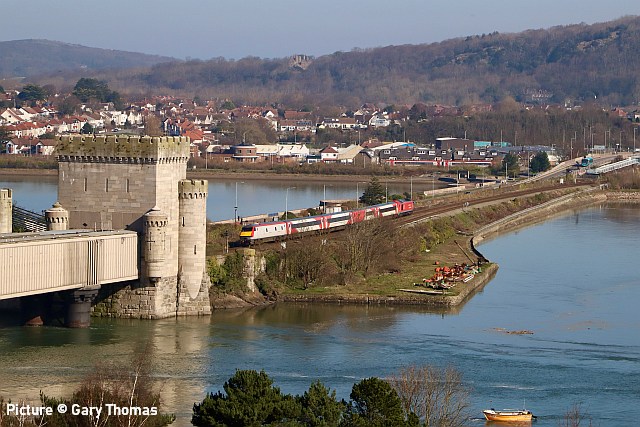
... and crossing the Cob towards Llandudno Junction (Gary Thomas). Once, a branch descended to Conwy Quay, seen to the right of the train. The three sidings on the quay were brought into use in 1852 to allow shipment of slate, fish and other goods brought down the Conway Valley by boat.
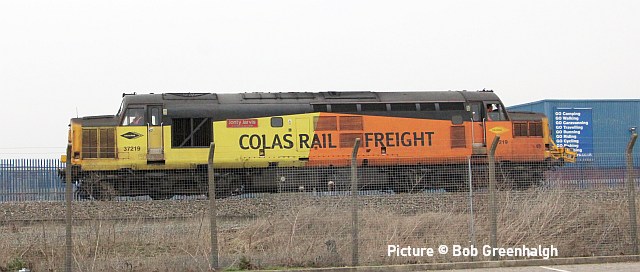
A well-timed visit to the pharmacy at Morrisons, Saltney by Bob Greenhalgh meant he was able to photograph 37 219 Jonty Jarvis as it headed for Rockliffe Hall. The loco has an "attachment" on the rear buffers.
The Jonty Jarvis name has been transferred to this Colas loco from DRS 37 229 which was scrapped some years ago. Jonty Jarvis, who died in 2005 aged just 6, was the son of a Network Rail manager Paul Jarvis.
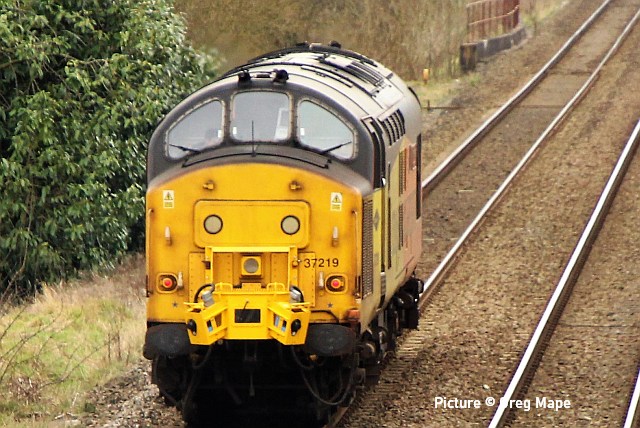
A clearer view of the device captured by Greg Mape on 4 March at Ashley on the Mid-Cheshire line. It carries cameras to record the state of the track.
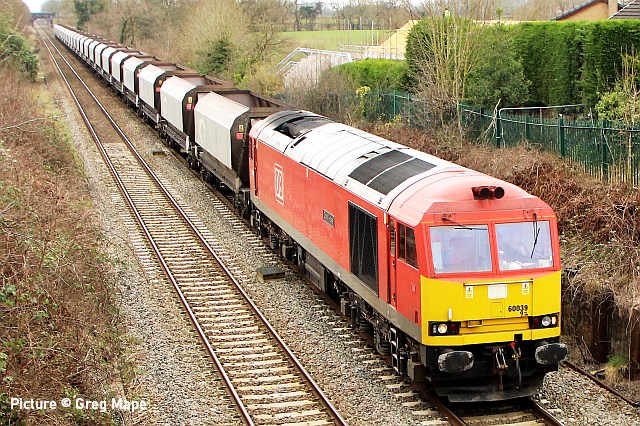
More from Greg Mape taken on 4 March: 60 039 on Northwich - Tunstead stone empties ...
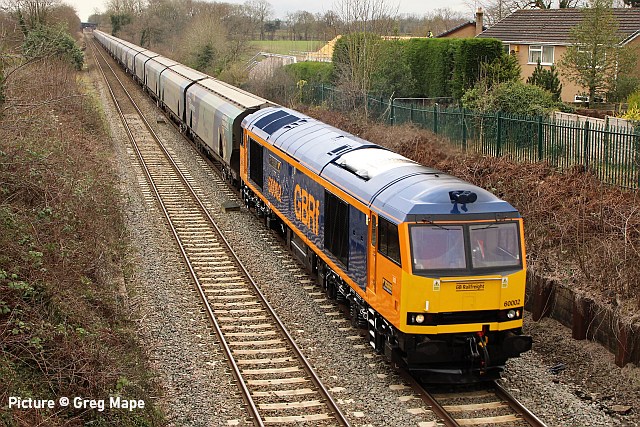
.. and 60 002 looking smart in its brand new GBRf colours on a Biomass service, with new and interesting nameplates 'Graham Farish' after the company that pioneered N-scale model trains in the UK. GBRf now has ten of these, the last main-line diesel locos to be built in Britain.
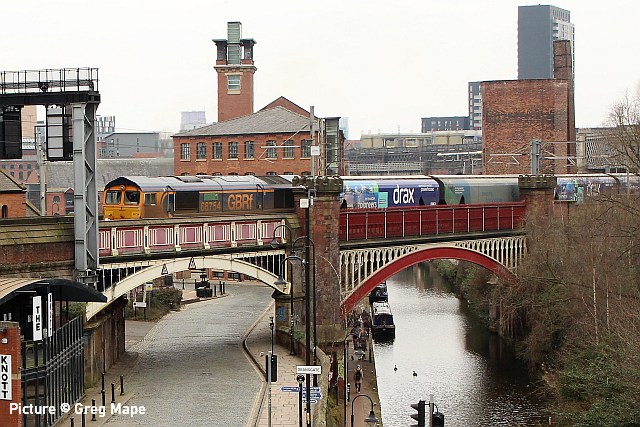
Due to engineering work on the Mid-Cheshire line, Liverpool - Drax biomass trains are diverted on Sundays to run via Manchester Piccadilly. Greg Mape timed an exercise walk to be at Deansgate on 7 March to see the 11:25 Liverpool Biomass terminal to Drax service hauled by 66 754 Northampton Saints. Ostensibly travving in the wrong direction at this point, the train will proceed to Yorkshire via Guide Bridge, Stalybridge and the Diggle route.
Shrewbury in the mist - images by Graham Breakwell
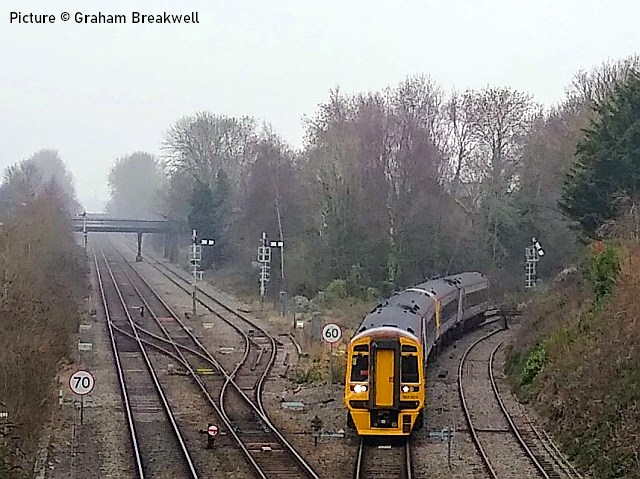
Sutton Bridge Junction with the 09:30 Aberystwyth and Pwllheli to Shrewsbury service passing the lower quadrant signal coming off the Cambrian line.
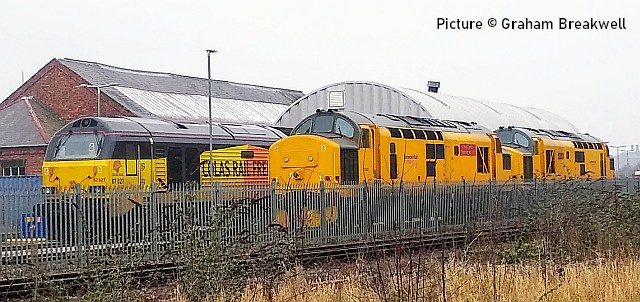
Three “namers”, 67 025 Charlotte, 97 302 Rheilfyrdd Ffestiniog ac Eryrl and 97 302 John Tiley, at Coleham depot.
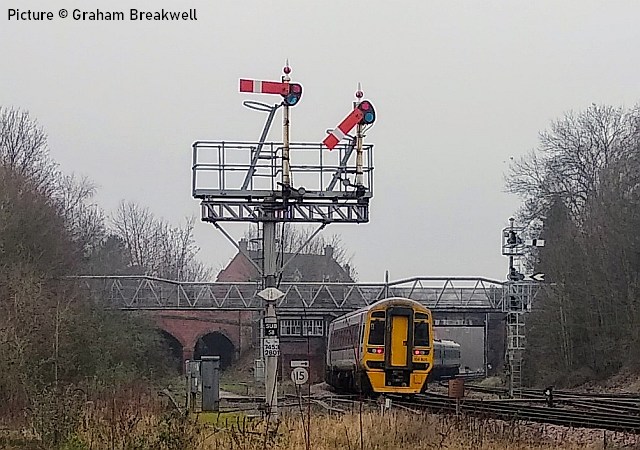
The 10:09 Birmingham International to Aberystwyth and Pwllheli, unusually expanded to three 158’s, passing Sutton Bridge Junction Signal Box and a selection of its many semaphores. The bridge arches on the left spanned the line to Bridgnorth and Kidderminster line with its signal long removed from the gantry, with the land to the left the site of the vast Shrewsbury sheds, closed in 1967.
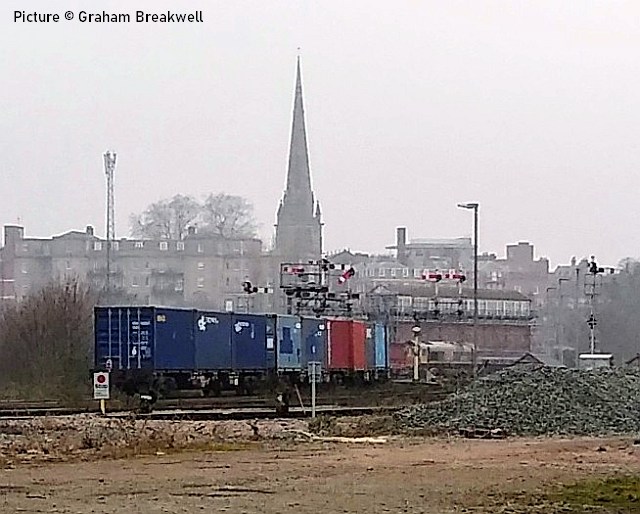
Threading its way through a sea of semaphores into Shrewsbury station, 66 739 with the 12:28 Donnington RFT to Kineton MOD. The grade 2 listed Severn Bridge Junction signal box, now the largest operational mechanical signal box in the World, looming out of the mist.
More on 'The first 31 on the Coast' - by John Price
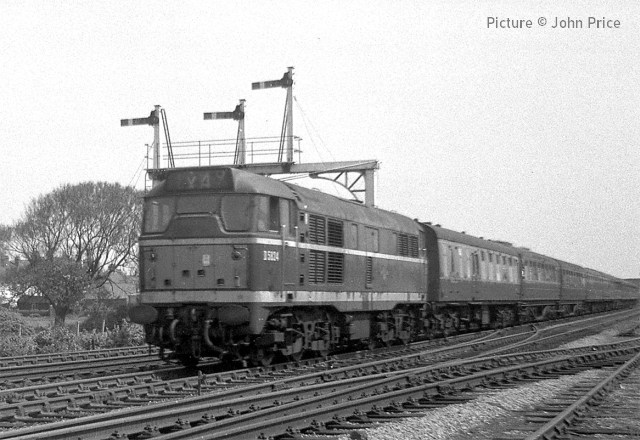
With reference to John Wilkinson's photograph and article entitled 'First 31
at Llandudno (?)' (25 February issue) I photographed D5824 passing through Prestatyn on an excursion (1X49) from Sheffield Midland. My records show the photograph was taken on Saturday, 8 June 1963.
The photograph (since cropped) was taken from the gated crossing near Sandy Lane, to the west of the station; a favourite location for photographing trains for John Hobbs, Dennis Kerrison and myself. It was the first time that I recall seeing a Brush Type 2 working along the North Wales coast. As John mentions, at the time, D5824 was based at Sheffield Darnall Motive Power Depot (41A) and post TOPS, D5824 became a Class 31/4 No. 31 415.
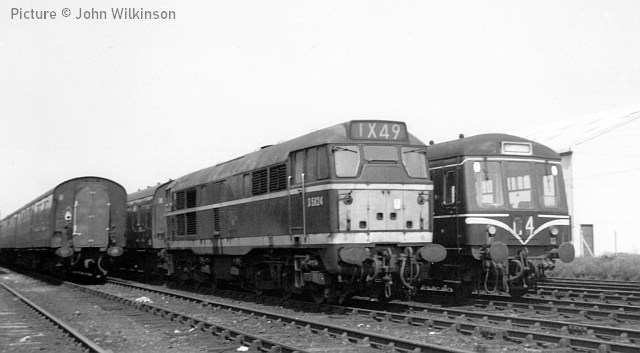
It is noted that John's photograph of D5824 (repeated abobe) was taken at Llandudno onSunday, 23 June 1963. Hopefully, my records are correct for the date of my photograph being Saturday 8 June, but I stand to be corrected. One noticeable difference between our photographs of D5824 is in the positioning of the headcode characters with the X49 being displaced in my photograph.
Does this confirm the different dates for the photographs or did D5824 have the same headcode displayed at both ends of the locomotive? I believe< excursion trains may have used a different headcode for the outbound and inbound journeys. My understanding is that X was used for inter-regional excursions and Z for regional excursions.
During summer 1963, there had been a Saturdays only service from Sheffield Midland to Llandudno and vice versa, 1M64 or 1M65 from Sheffield, depending on the date, and 1E21 from Llandudno. Interestingly, 1E20 ran from Colwyn Bay to Sheffield with the empty stock having arrived from Llandudno as 3D66.
It is understood that the locomotive working from Sheffield to Llandudno remained at Llandudno Junction MPD (6G) for the week before returning to Sheffield the following Saturday.
[Any comments? - C.H.]
From Dave Sallery's archive
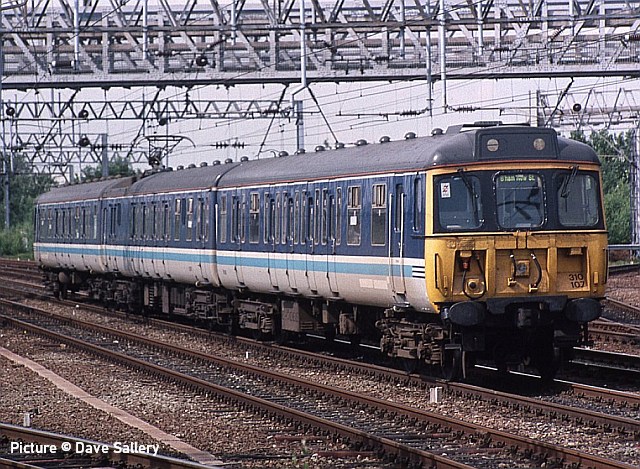
310 107 near Crewe on a Liverpool - Birmingham service, 2 August 1997. These units were introduced in 1965 to work services out of Euston on the newly electrified WCML. Later reduced to 3 cars for West Midlands services, this unit is working a Liverpool - Birmingham New Street train. They could also be seen occassionally in the Manchester area earlier in thir career.
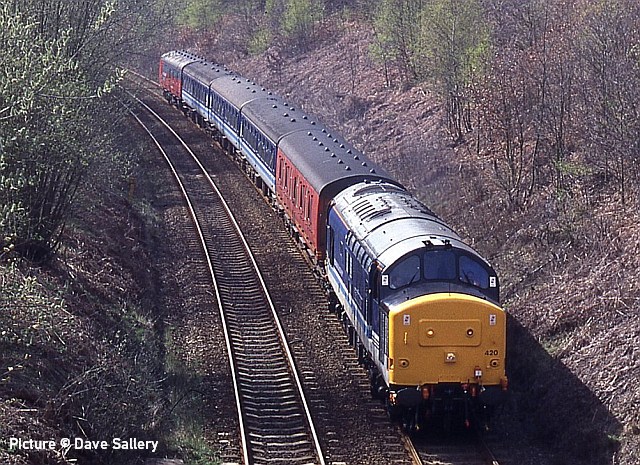
37 420 The Scottish Hosteller on the Mid-Cheshire line near Delamere, 23 April 1996. The unusual consist including two parcels vans and the very clean loco are explained by the fact that the emerged that day from an intermediate overhaul at Doncaster Works, this may be a test run of some sort, or maybe the coaches have also been overhauled.
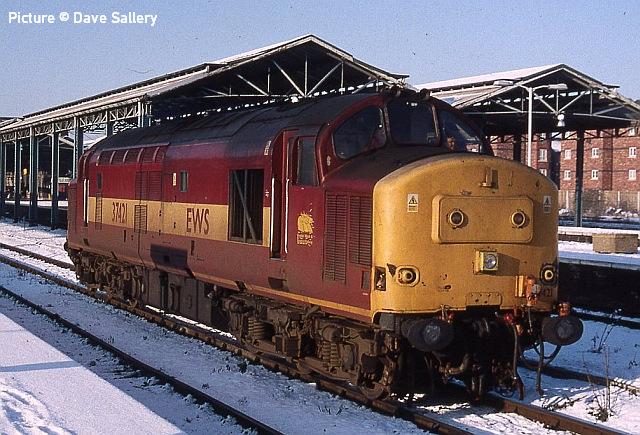
37 421 in the snow at Chester during the last days of the 37's on passenger trains on the coast, 28 December 2000. By this time 421 had lost its Regional Railways livery (and name The Kingsman) in favour of the second version of EWS, with no ampersand and the lettering in Gill Sans Bold. As mentioned in recent updates, it is very much still alive today with Colas.
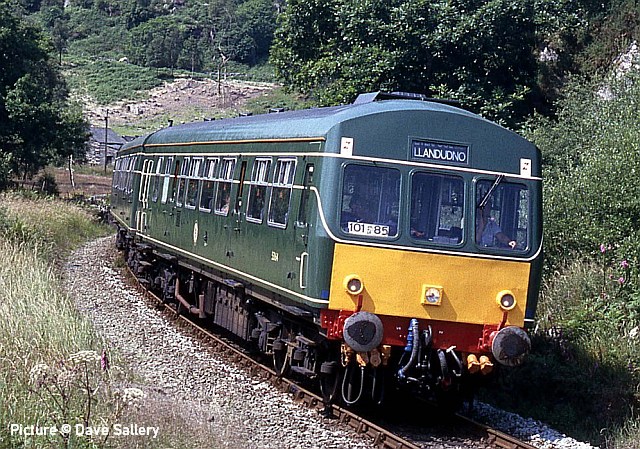
101 685 on the Conwy Valley line on 18 July 1994, just after repainting intoa version of original BR green livery in conjunction with a publicity campaign for the Conwy Valley line. (Those were the days!) Inevitably it gained the nickname 'Daisy' after a DMU character in a certain series of books. Later, reduced from three cars to two, it was allocated to the Manchester area and lasted to take part in a Farewell Special at the end of 2003. (The full story can be found on the superb website railcar.co.uk. Since then it was lived at various preservation sites, and currently, resored to a 3-car set, it is at the North York Moors line.
The Dee bridge on the Llangollen Railway - report by George Jones
Amidst the gloom of last week's announcement about the PLC becoming insolvent, there was a ray of sunshine when a team of ten volunteers came together to rerail the bridge at Pentrefelin.
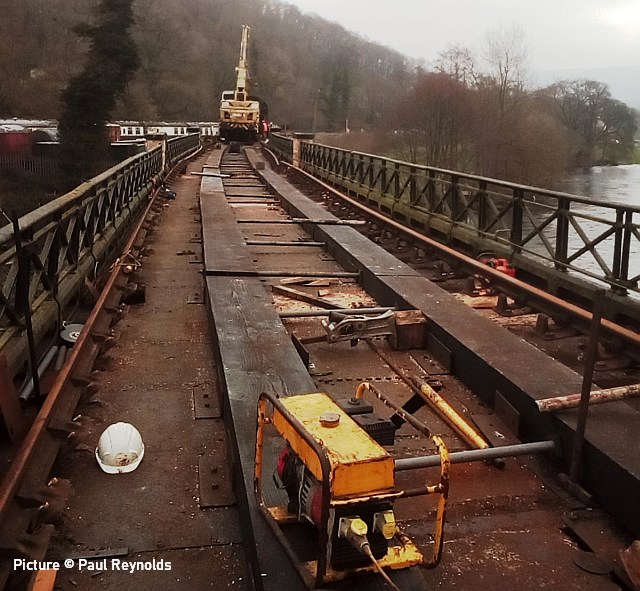
With the new timbers on site following their successful purchase from donations back in December, the 18 lengths were brought onto the three bridge spans and sprayed for their preservation.
All the rail has now been replaced on the timbers. Rails at the west and east ends have been fixed in place with the chairs drilled and screwed down with rail keys added. The rest of the fixing is subject to adjustment - level and gauging and completing the tie rods. A couple of joints will receive rail welds to help smooth trip over the bridge.
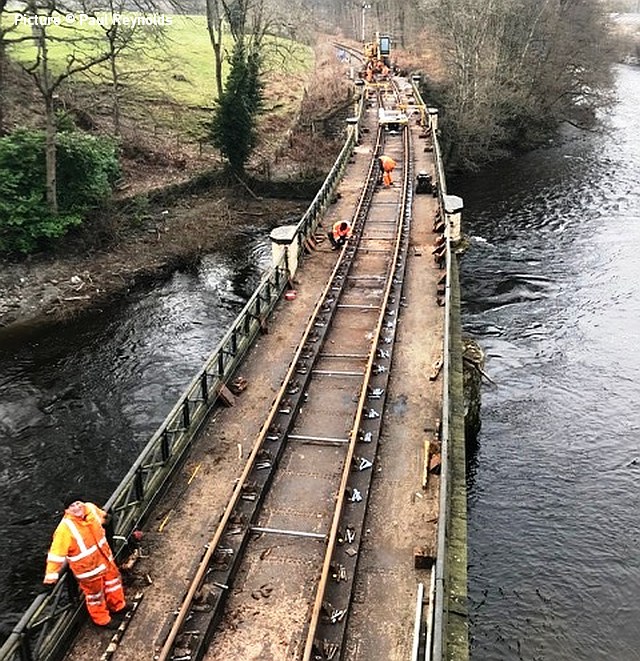
By Friday 5 March the Road Rail Vehicle was able to cross and head down the line to its base at Corwen. The check rails are still to be installed and the rail joints need welding but this work is suspended pending authorisation from the Administrator and Office of Rail and Road.
With all operations on the railway now suspended, further work to complete the bridge in readiness for resumption of trains must await the Administrator's permission.
North Wales Coast home page | Archive | Previous Notice Board